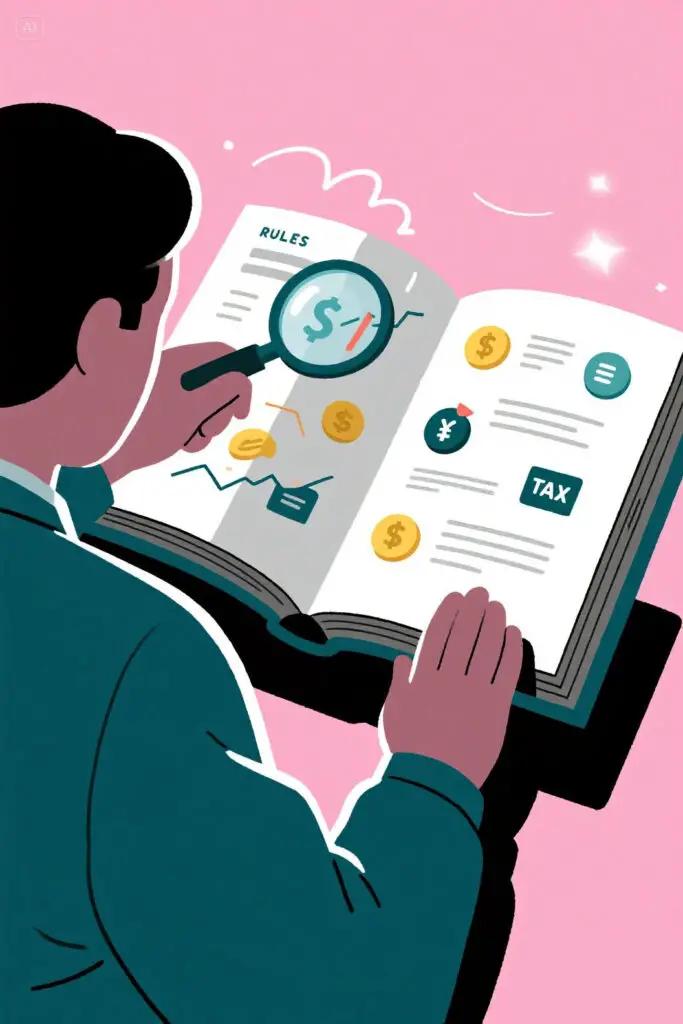Financial freedom is a term that we hear quite often, yet most people are not really sure what it actually means or how they can ever get there. For some people, financial freedom simply means being able to pay their bills on time without the constant stress of running out of money, for others it is about being able to retire early and spend their days doing the things they love without worrying about a paycheck. In his well-known book, “Money: Master the Game”, Tony Robbins takes this idea and makes it real by offering not just vague dreams of independence but a clear and practical roadmap that anyone can follow, no matter whether they are just starting their journey or already on the path to building wealth. This article will help you explore the 7 steps to financial freedom by Tony Robbins, helping you become financially free and stable in the long run.
Step 1: Make the Most Important Financial Decision of Your Life
The very first step that Tony Robbins talks about is not about learning complicated investment formulas or chasing big opportunities, it is simply about making a personal choice that changes the direction of your life forever, and that choice is deciding to become an investor instead of being only a spender. Most of us are used to earning money and spending it almost as quickly as it comes in, and while that might cover today’s needs, it does nothing for tomorrow.
Robbins explains that financial freedom begins when you decide that no matter what, you will always put aside a small part of what you earn and make it work for you instead of letting it slip away. Even if the amount feels small at first, the power lies in the habit, because once you commit to paying yourself first, your future self benefits from the money that grows quietly in the background.
Step 2: Become the Insider and Know the Rules Before You Get in the Game

Once you have made the decision to invest, the next step is to learn how the money game actually works. Robbins says that the financial industry often takes advantage of people who do not educate themselves, charging hidden fees, offering confusing products, and giving advice that is not always in the client’s best interest.
To protect yourself and grow with confidence, you need to take responsibility for learning the basics, for instance, how investments grow, what risks exist, how fees and taxes affect your returns, and how different financial tools work. You do not have to become an expert overnight, but by becoming an insider, you remove the fear and confusion that holds most people back.
Step 3: What’s the Price of Your Dreams? Make the Game Winnable
A lot of people believe financial freedom is only for millionaires, but Robbins encourages us to stop thinking in overwhelming terms and instead, get clear on exactly what it would cost to live the life we truly want. He asks you to sit down and calculate how much money you really need each month or each year to cover your essentials, your comforts, and even your dreams.
Many people are surprised when they do this exercise, because the number is usually smaller and more achievable than they first imagined. This is what he means by making the game winnable, because once you know your number, you can create a plan that feels realistic rather than chasing some endless and uncertain goal. With a clear target in front of you, every saving and investing step becomes more meaningful, because you can see how it moves you closer to the life you want.
Step 4: Make the Most Important Investment Decision of Your Life
In this step, Robbins reminds us that the success of your investments does not depend on picking the perfect stock or trying to time the market, but on how you divide your money across different types of assets. This process is called asset allocation, and it is one of the biggest factors that determines whether your wealth grows steadily or gets lost to sudden risks.
By spreading your money between things like stocks, bonds, real estate, and cash, you protect yourself from losing everything if one part of the market goes down, while still allowing your money to grow over time. Robbins explains that even the wealthiest investors in the world rely on this principle, because it balances growth with safety. Making this decision wisely is the difference between financial stress and financial confidence, because it ensures that your future is not left to chance but supported by a structure designed to last.
Step 5: Upside Without the Downside and Create a Lifetime Income Plan

One of the biggest fears people carry is the thought of running out of money when they get older, and Robbins addresses this by showing how you can build a plan that gives you steady income for life while still allowing your wealth to grow. The idea is to combine investments that have potential for growth with strategies that also protect you from big losses, so you can enjoy the upside without being crushed by the downside.
This might include using tools like annuities for guaranteed income, dividend-paying investments, or other options that make sure your basic needs will always be covered. When you know that no matter what happens in the economy you will still have money coming in, a huge weight is lifted off your shoulders, because you are no longer depending only on your job or on hope. This step is really about peace of mind, knowing that your future is secured allows you to enjoy the present without the constant fear of financial collapse.
Step 6: Invest Like the .001% — The Billionaire’s Playbook
In this step, Robbins takes us inside the minds of some of the world’s most successful investors, people who have built incredible wealth not by luck but by using strategies that anyone can learn from. He interviewed financial giants like Warren Buffett and Ray Dalio, and what he discovered is that their success is not about chasing trends or gambling on risky moves, but about patience, discipline, and intelligent planning. For example, Dalio’s approach focuses on building a portfolio that can withstand different economic conditions, while Buffett’s philosophy is about long-term value and ignoring short-term noise.
Robbins explains that while we may not have billions to invest, we can still follow the same principles on a smaller scale such as balancing our portfolios wisely, focusing on long-term growth, and avoiding emotional decisions that sabotage our progress. Learning from the very best gives us a shortcut to avoid mistakes and build wealth with confidence, because their playbook is already tested and proven.
Step 7: Just Do It, Enjoy It, and Share It
The final step is about taking action and remembering why you started this journey in the first place. All the knowledge and strategies in the world mean nothing if you do not apply them, so Robbins encourages us to begin wherever we are, even if it feels small at first, because the real progress comes from starting and staying consistent.
As your financial situation improves, it is also important to celebrate the small wins along the way instead of waiting until the end, because enjoying the journey makes the process more meaningful. Most importantly, Robbins highlights that true financial freedom is not just about having enough for yourself but also about sharing your blessings with others.
Whether it is helping your family, supporting your community, or contributing to causes you care about, giving back creates a sense of purpose that money alone cannot provide. In the end, wealth is not just about security or luxury, it is about freedom, joy, and the ability to make a difference.
Conclusion
When you look at Tony Robbins’ seven steps to financial freedom as a whole, you realize that this journey is not about chasing some impossible dream of endless wealth, it is about creating a life where money stops being your biggest worry and instead becomes a tool that gives you choices and peace of mind. What makes these steps so powerful is that they are not just about numbers and investments but about shifting your mindset, because financial freedom is not only about how much you have in the bank but also about how you feel when you think about money. The truth is that freedom comes when you no longer live in fear of running out, when you know you have created a plan that will take care of you and your loved ones, and when you are in a position to share your success with others.
